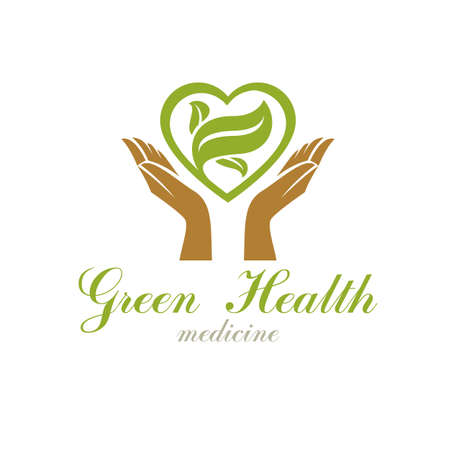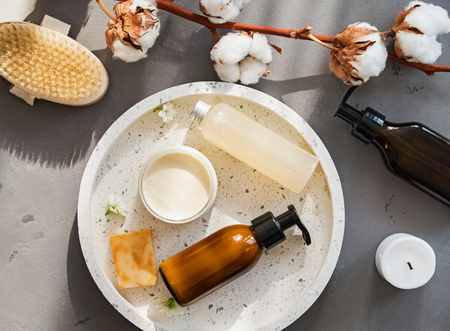Understanding Inflammation and Its Impact on Skin Health
In today’s fast-paced American lifestyle, chronic inflammation has become a growing concern, particularly regarding its effects on skin health. Many common skin issues—such as acne, eczema, psoriasis, and premature aging—are now linked to persistent inflammation triggered by environmental factors and diet. The standard American diet, often high in processed foods, sugar, unhealthy fats, and low in antioxidants, can fuel systemic inflammation that shows up on the skin’s surface. Additionally, stress, lack of sleep, and exposure to pollutants further aggravate inflammatory responses within the body. Understanding this relationship is crucial because the skin acts as both a barrier and a mirror reflecting internal health. When inflammation becomes chronic, it disrupts the natural repair processes of the skin, leading to redness, swelling, irritation, and even long-term damage such as collagen breakdown or hyperpigmentation. Exploring natural detox methods to reduce inflammation not only supports clear and radiant skin but also addresses underlying health imbalances shaped by modern American living habits.
The Role of Nutrition in Natural Detox
When it comes to natural detox methods for reducing inflammation and improving skin quality, nutrition plays a pivotal role. The American diet is often criticized for its processed foods and high sugar content, but it also includes a variety of anti-inflammatory and detoxifying foods that are both accessible and easy to incorporate into everyday meals. Understanding which foods can help your body naturally cleanse itself is key to optimizing your wellness strategy.
Top Anti-Inflammatory and Detoxifying Foods
Some common ingredients in the American kitchen—such as leafy greens, berries, fatty fish, nuts, and seeds—are scientifically proven to combat inflammation and support the bodys detox pathways. For example, spinach and kale are rich in antioxidants like vitamin C and E, while berries deliver anthocyanins that fight oxidative stress. Salmon, walnuts, and flaxseeds provide omega-3 fatty acids that curb chronic inflammation at the cellular level.
Easy Meal Swaps for Everyday Detox
Adopting a cleaner diet doesnt mean overhauling your entire meal plan overnight. Instead, simple food swaps can make a significant difference. Here’s a practical table highlighting accessible swaps you can try today:
| Traditional Choice | Detox-Friendly Swap | Benefit |
|---|---|---|
| White Bread | Whole Grain or Sprouted Bread | Higher fiber aids digestion & toxin elimination |
| Soda or Sugary Drinks | Sparkling Water with Lemon or Infused Water | Lowers sugar intake; lemon supports liver function |
| French Fries | Baked Sweet Potato Fries | Rich in beta-carotene; less inflammatory fats |
| Creamy Salad Dressing | Olive Oil & Apple Cider Vinegar | Healthy fats & antioxidants without additives |
| Ice Cream Dessert | Berries with Greek Yogurt | Probiotics improve gut health; antioxidants boost skin quality |
Sustainable Changes for Lasting Results
The beauty of these swaps is their accessibility—they don’t require specialty stores or expensive products, just a mindful approach at your local grocery store. By consistently choosing nutrient-dense, anti-inflammatory foods, you’ll not only enhance your body’s natural detox processes but also lay the foundation for clearer skin and reduced systemic inflammation.

3. Hydration Hacks for Radiant Skin
When it comes to natural detox methods for reducing inflammation and improving skin quality, hydration is a true game changer. Drinking enough water helps flush toxins from your body, supports metabolic processes, and keeps your skin looking plump and youthful. However, many Americans struggle to meet their daily hydration goals. Here are some practical and trendy ways to boost your water intake that align with popular U.S. preferences.
Upgrade Your Beverage Choices
While plain water is always a winner, you don’t have to limit yourself to it alone. Unsweetened iced teas—like green tea or herbal blends—are American favorites known for their antioxidant properties and refreshing taste. Sparkling water has also become a staple in the U.S., providing a fizzy alternative without added sugars or calories found in sodas. For those who enjoy a morning ritual, swapping sugary lattes for black coffee or matcha can support hydration and offer anti-inflammatory benefits when consumed in moderation.
Infused Water: The Trendy Way to Stay Hydrated
Infused water, sometimes called “spa water,” has surged in popularity across the States. This method involves adding fresh fruits, vegetables, and herbs—think cucumber-mint, strawberry-basil, or lemon-lime—to your water bottle. Not only does this make hydration more appealing, but many of these ingredients offer additional vitamins and antioxidants that contribute to glowing skin and reduced inflammation.
Smart Hydration Tips for Busy Lifestyles
Americans are busier than ever, so convenience is key. Carrying a reusable water bottle is now as much a fashion statement as it is a health tool. Set reminders on your phone or use smart bottles that track your intake throughout the day. If you’re working from home or in an office, keep a carafe of infused water on your desk as a visual cue to drink more often.
The Bottom Line
Optimal hydration supports your body’s natural detoxification pathways and directly influences the health and appearance of your skin. By incorporating popular beverages and creative infused waters into your daily routine, you can enjoy better hydration—and better skin—without sacrificing flavor or convenience.
4. Movement and Mindfulness: Everyday Detox Practices
Incorporating movement and mindfulness into your daily routine is a powerful way to naturally reduce inflammation and improve skin quality. Exercise stimulates blood circulation, which helps flush toxins from the body, while mindfulness practices like yoga and meditation can lower stress-induced inflammation—a major contributor to dull, unhealthy skin.
Simple Exercise Routines for Detoxification
Even moderate activity can promote detoxification by supporting the lymphatic system and increasing oxygen flow. Here’s a quick comparison of easy-to-adopt exercise routines:
| Exercise Type | Duration (per session) | Detox Benefits |
|---|---|---|
| Brisk Walking | 20-30 minutes | Boosts circulation, supports lymph drainage, reduces inflammation |
| Gentle Yoga | 15-40 minutes | Enhances flexibility, promotes relaxation, aids toxin release through sweat |
| Pilates or Stretching | 10-20 minutes | Improves posture, activates core muscles, encourages healthy digestion |
| Light Cardio (Cycling/Swimming) | 20-30 minutes | Increases heart rate, maximizes oxygenation, assists metabolic waste removal |
The Role of Mindfulness in Reducing Inflammation
Mental stress is often overlooked as a source of chronic inflammation that can negatively impact your skin. Mindfulness-based activities help regulate the body’s stress response, lowering levels of cortisol (the “stress hormone”) that are linked to inflammation and skin flare-ups.
Mindfulness Practices for Everyday Detox Support:
- Meditation: Just 5-10 minutes a day of guided or silent meditation can calm the mind and body, reducing systemic inflammation.
- Breathwork (Pranayama): Deep breathing techniques increase oxygen intake and promote toxin release through exhalation.
- Mindful Walking: Focusing on your steps and surroundings during a walk combines movement with mental clarity for double detox benefits.
- Body Scans: This practice increases awareness of bodily sensations and tension, encouraging physical relaxation and improved lymphatic flow.
Sustainable Daily Habits for Lasting Results
The key to reaping the detoxifying benefits of movement and mindfulness is consistency. Integrate short exercise sessions and moments of mindfulness into your daily schedule—whether it’s a morning yoga stretch, a lunchtime walk around the block, or an evening meditation before bed. Over time, these habits not only support your body’s natural detox systems but also contribute to visibly healthier, more radiant skin.
5. Clean Beauty: Choosing Skin-Friendly Products
As Americans become increasingly conscious of health and wellness, the clean beauty movement has surged in popularity across the US. This trend highlights a shift toward using skincare products made from naturally-derived ingredients, free from potentially harmful chemicals that may contribute to inflammation and dull skin. Embracing clean beauty is a powerful natural detox method, supporting not only clearer skin but also overall well-being.
The Rise of Clean Beauty in the US
In recent years, consumers are demanding transparency from brands about what’s inside their skincare products. The push for cleaner labels and fewer synthetic additives reflects a broader desire to minimize exposure to toxins that can disrupt the body’s natural balance and trigger inflammatory responses. From boutique apothecaries in Brooklyn to major retailers nationwide, clean beauty shelves are expanding rapidly.
What Labels to Look For
When shopping for skin-friendly products, look for labels such as “fragrance-free,” “paraben-free,” “phthalate-free,” and “sulfate-free.” Certifications like USDA Organic, EWG Verified, and Leaping Bunny (for cruelty-free) offer additional assurance that a product meets stricter ingredient and ethical standards. Terms like “non-comedogenic” and “dermatologist-tested” can further indicate products less likely to irritate sensitive or acne-prone skin.
Ingredient Red Flags
To support your skin’s detox process, steer clear of common red-flag ingredients such as synthetic fragrances, parabens, formaldehyde releasers, PEGs (polyethylene glycols), and sulfates. These substances have been linked to inflammation, allergic reactions, and even hormonal disruption in some studies. Instead, seek out plant-based extracts, cold-pressed oils, and naturally-derived antioxidants like vitamin C or green tea—ingredients proven to soothe irritation while promoting a radiant complexion.
Empowering Your Skincare Routine
Integrating clean beauty into your daily regimen doesn’t require an overnight overhaul. Start by swapping out one or two conventional products for cleaner alternatives and pay attention to how your skin responds. Over time, this mindful approach can significantly reduce your toxic load, ease inflammation, and enhance your natural glow—proving that what you put on your skin is just as important as what you put in your body.
6. Sleep and Stress Management for Skin Recovery
While diet and topical treatments often steal the spotlight in natural detox routines, the crucial roles of sleep quality and stress management in reducing inflammation and enhancing skin clarity are frequently overlooked. Chronic stress triggers a cascade of hormonal responses, particularly an increase in cortisol, which can exacerbate systemic inflammation and lead to skin conditions such as acne, eczema, and premature aging. Similarly, inadequate or poor-quality sleep disrupts the body’s natural repair mechanisms, hindering cellular regeneration and leaving skin looking dull or prone to breakouts.
How Sleep Impacts Skin Health
During deep sleep phases, the body ramps up production of growth hormone, vital for tissue repair and collagen synthesis. This overnight recovery period allows skin cells to renew themselves, supporting a clearer complexion and greater resilience against environmental aggressors. Studies consistently show that individuals who get seven to nine hours of restful sleep nightly enjoy reduced inflammatory markers and more radiant skin compared to those who are sleep-deprived.
Stress Reduction: A Natural Anti-Inflammatory Strategy
Effective stress management is equally indispensable for healthy skin. Techniques such as mindfulness meditation, yoga, journaling, or simply spending time outdoors have been shown to lower cortisol levels and reduce inflammation throughout the body. By integrating these practices into daily life, you create an environment where your skin can heal more efficiently from irritations or flare-ups without the ongoing interference of stress hormones.
Actionable Tips for Better Sleep and Less Stress
Establish a consistent bedtime routine by winding down with calming activities—reading, gentle stretching, or herbal teas like chamomile—to signal your body it’s time for rest. Limiting screen time before bed and keeping your bedroom cool and dark can further enhance sleep quality. For stress relief, prioritize small but regular breaks during your day to breathe deeply or practice gratitude; over time, these habits contribute to lower inflammation levels and visibly improved skin texture.
Incorporating mindful rest and stress reduction techniques alongside dietary detox methods creates a holistic approach to combating inflammation and optimizing skin health. By treating sleep and stress management as foundational pillars in your wellness routine, you enable your body’s natural detoxification processes to work at their best—delivering not just clearer skin but a healthier you overall.


